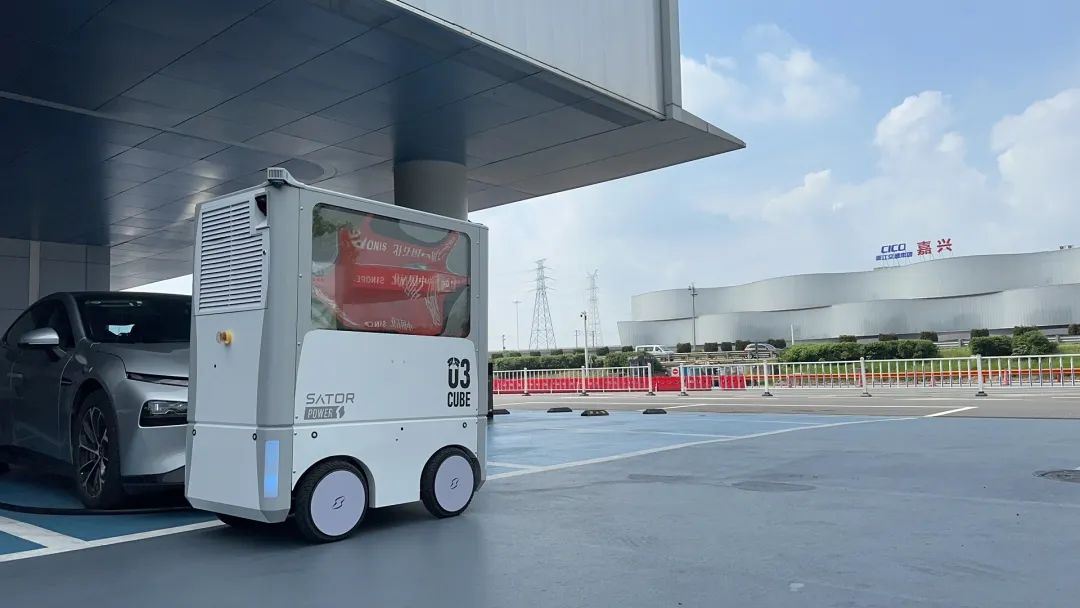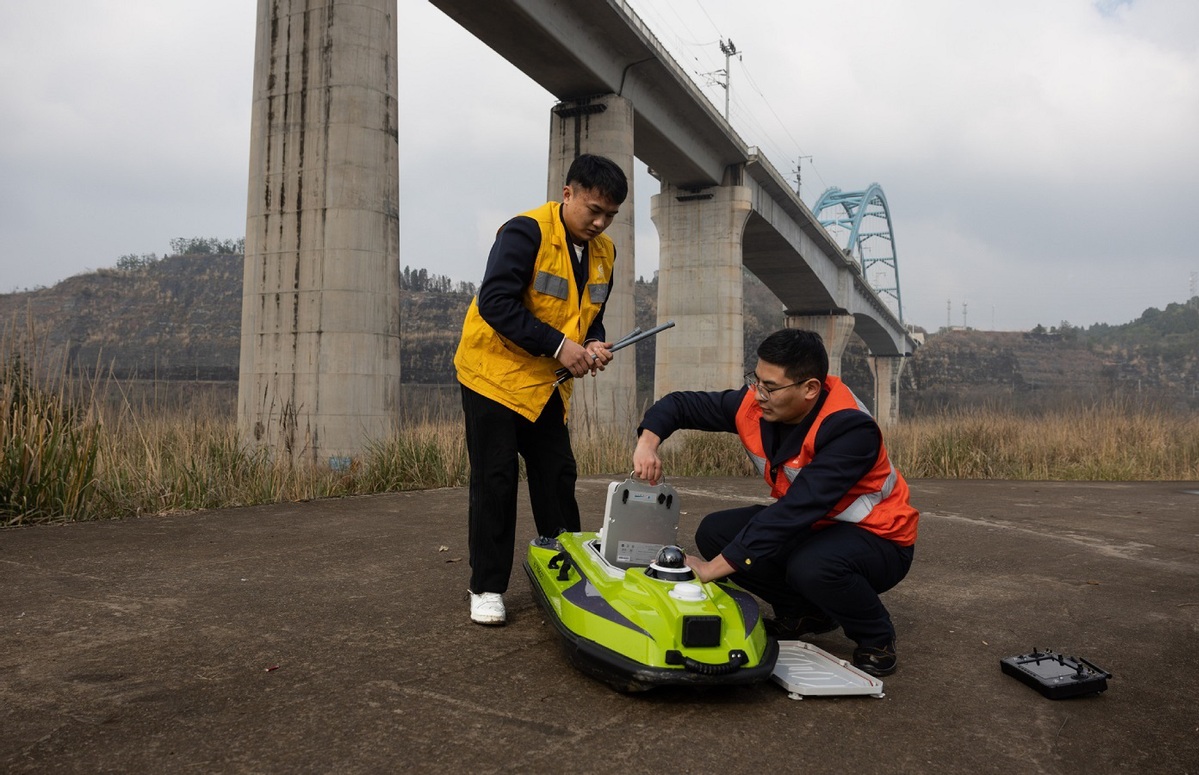Some stations along the Beijing-Zhangjiakou high-speed railway have introduced intelligent service robots, which have taken the job of guiding passengers, answering inquiries, and carrying heavy luggage.
The intelligent service robot has a closed storage box with a maximum carrying capacity of 100 kilograms. After placing bulky items in the storage box, passengers scan the code or undergo facial recognition to make the robot follow. In addition, the robot can also lead passengers to check-in points.


This photo shows a robot patrolling at a substation serving the railway linking Chengdu with the cities of Zigong and Yibin in Southwest China’s Sichuan province. [Photo/Xinhua]
Patrol robots, suitable for substations and other key areas, can remotely monitor noise, gas, and temperature by laser sensors, high-definition cameras, and infrared thermal imagers.
The arm of the robot can rotate 360 degrees, achieving multi-angle inspections. With a high-resolution image processing system, it can quickly complete panoramic scanning and intelligent analysis of the components at the bottom of a bullet train, shortening the maintenance time for 8 carriages from 2.5 hours to 45 minutes.


This photo shows a mobile charging robot. [Photo/Official WeChat account of Zhejiang Commercial Group]
At Jiaxing Service Area of Shanghai-Hangzhou Expressway, mobile charging robots have introduced unmanned driving technology, which can continuously charge 4 to 5 vehicles. The robot can locate vehicles and charge them.
2. Luggage check-in information platform


A passenger scans the code to track the real-time status of luggage. [Photo/Official WeChat account of Shandong Airport]
Jinan International Airport in Shandong province has launched an information platform for luggage, which enables passengers to track the real-time status of their luggage via the phone after handing it over at the check-in counter.
3. Gaotiexia intelligent restaurant


This photo shows the Gaotiexia intelligent restaurant at Jinan Railway Station in Shandong province. [Photo/Official WeChat account of CHINA RAILWAY]
The Gaotiexia intelligent restaurant at Jinan Railway Station in Shandong province can provide meals to passengers in the shortest time with robotic equipment.
The restaurant has 6 automatic cooking machines. The cooking machine can make a bowl of delicious beef noodles in 48 seconds. Each dish takes 5 minutes from being ordered to being delivered to the table.


This photo shows a smart coffee machine at the Gaotiexia intelligent restaurant. [Photo/ Official WeChat account of CHINA RAILWAY]
The restaurant also has a smart coffee machine, soymilk and beverage machine and ice cream machine. After customers scan the code and pay, everything is ready in a few minutes.
4. Unmanned boat

Workers carry out preparation work in Chengdu, Southwest China’s Sichuan province, on Jan 27, 2024. [Photo/Xinhua]
Unmanned boats have been used for bridge inspection along the Chengdu-Chongqing intercity railway. Workers can measure the cross-section of riverbed in upstream and downstream areas with a remote control, and collect accurate and comprehensive data, thus offering a scientific basis for bridge maintenance.

A worker operates an unmanned boat in Chengdu, Southwest China’s Sichuan province, on Jan 27, 2024. [Photo/Xinhua]
5. Snow-melting device

This photo shows snow-melting devices at turnouts. [Photo/Chengdu-Lanzhou railway project department of China Railway Electrification Bureau Group]
Snow-melting devices have been installed at turnouts from Maoxian railway station to Zhenjiangguan railway station, a section of the Sichuan-Qinghai railway, formerly known as Chengdu-Lanzhou railway. The device can switch functions in light of snow accumulation and temperature, to ensure the safety of train operation. When the temperature drops below 0 C, its heating units start working.
6. Smart skylights

This photo shows smart skylights at Xiamen North Railway Station in Xiamen, Fujian province. [Photo/Xinhua]
Smart skylights at Xiamen North Railway Station in Xiamen, Fujian province, can be easily controlled by monitoring light intensity, wind force, precipitation, and indoor-outdoor differences in real time, in a bid to improve the indoor environment and save energy.
“With smart skylights, the ventilation system stops operation for 40 days per year, equivalent to a reduction of 14.13 tons of carbon dioxide,” said Sun Yufeng, deputy head of Xiamen North Railway Station.












